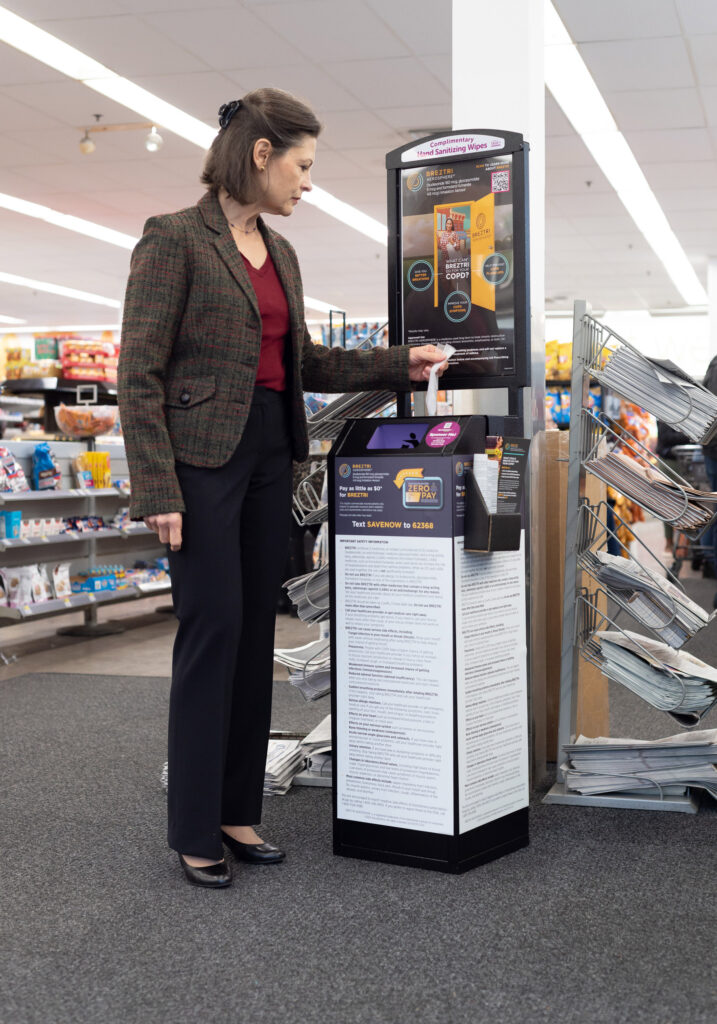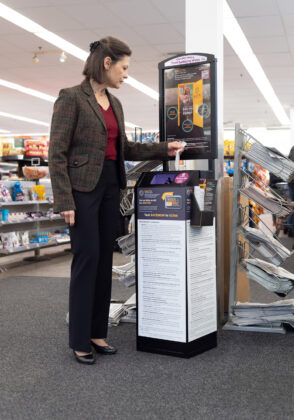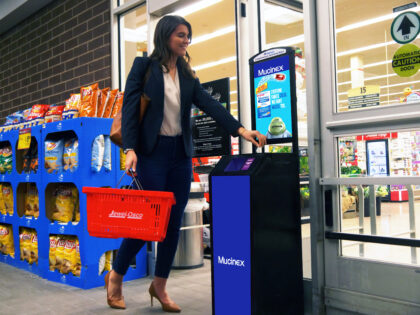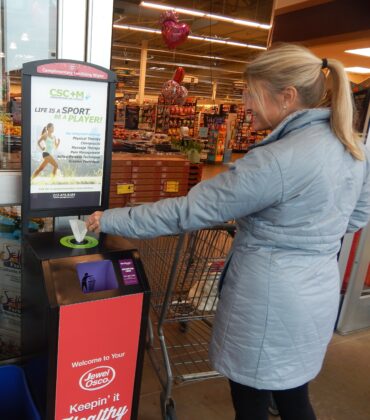Consumers are exposed to pharmaceutical ads all the time, whether they’re watching TV, surfing the internet, or driving past a highway billboard. But how often do consumers really engage with these ads?
Many pharmaceutical companies are investing in point-of-care advertising for increased targeting and consumer engagement that other ad placements can’t provide.
So, let’s break down how to get started in point-of-care advertising and the best strategies to use.
What Is Point of Care Advertising?
Point-of-care (POC) advertising refers to all the marketing material that patients and consumers are exposed to in a healthcare setting. These healthcare settings can include doctors’ offices, clinics, hospitals, or even pharmacy waiting areas.
Benefits Of Point Of Care Marketing
Point of care marketing is so effective for pharmaceutical companies because it provides an optimal contextual setting. By advertising in doctors’ offices and pharmacies, you can boost your brand awareness and align your company’s image with the medical professionals and pharmacists that consumers trust. Plus, patients are more likely to ask their care provider about an advertised drug or treatment if they see it right before their medical appointment.
Another great benefit of point of care marketing is that it provides marketers with targeted reach. For example, a heart medication distributor could guarantee that their advertisements are viewed by their target audience if they advertise in a cardiac clinic.
Point of care advertising is also a great medium for engaging healthcare professionals (HCPs). HCPs will obviously frequent healthcare facilities and it’s crucial for pharma companies to increase the awareness of their drug among medical professionals that can recommend and prescribe it to patients.
If you’d like to dive deeper into the strategies, check out this guide on health marketing.
Examples
Wellness Boards in Pharmacy Wait Areas

Wellness billboards are an innovative advertising medium that offers consumers sanitizing wipes below a prominently featured advertisement. These wellness boards can compound the contextual benefits of POC advertising by directly appealing to health-conscious consumers and encouraging them to stop for a moment, take a wipe, and view the advertisement.
Terraboost is a leader in this advertising channel and independent studies have shown that 66% of shoppers engage with sanitizing kiosks and that 50% would take a coupon or brochure to learn more about the sponsored company.
Flu Shot Promotions in Urgent Care Facilities

These posters are a great example of how POC advertising can be used to initiate a conversation between patients and care providers. By promoting flu vaccines in their urgent care clinics, the Minute Clinic encouraged patients to ask their healthcare provider about the flu vaccine and therefore increased vaccination rates.
Digital OOH Advertising in Lobbies

Digital out-of-home (DOOH) advertising can be immensely effective in healthcare settings and provide patients with engaging content with alternating images or even animated displays. However, advertisements in doctor’s office lobbies and exam rooms can go unnoticed as patients will be preoccupied with filling out forms and their personal health concerns.
How To Implement Point of Care Advertising
Marketing campaigns can have a variety of approaches to point-of-care advertising, so it’s important to fully understand your objectives and use the best mediums to accomplish them. If you’re interested in understanding more about medical advertising, you might find this article valuable.
Set your goals
Pharmaceutical companies can utilize point-of-care marketing to increase brand awareness, drive product sales, or launch new products. However, some marketing campaigns can be even more specified and look to engage with HCPs, increase disease awareness, or even partner with Key Opinion Leaders (KOLs).
With each of these objectives, marketers will select different ad placements and mediums to better reach their target audience.
Identify your target audience
Pharma marketing has two main target audiences:
- HCPs: Not all HCPs are the same, so it’s important to reach the medical professionals that are most likely to recommend your drug to their patients. For example, an acne treatment producer should primarily target dermatologists and family doctors over other specialties.
- Consumers: Your drug is likely used by a specific consumer demographic. That means you should feature your point of care advertisements in medical facilities that they are most likely to frequent.
Select the location
Choosing the right location for your promotional material is extremely important because certain contextual settings, such as a doctor’s office, can boost your brand’s credibility as consumers will associate your pharma company with the HCP they trust.
You’ll need to conduct some research on your target audience and find out which healthcare facilities they are most likely to visit, whether that’s hospitals, specialty clinics, or pharmacies.
Choose the advertising medium
Different demographic groups are more likely to appreciate and engage with different advertising mediums. For example, senior citizens may be less likely to engage with a digital out-of-home (DOOH) advertisement that features an interactive touch screen but would be more likely to take a brochure.
However, some advertising mediums have general consumer appeal. Wellness billboards in pharmacy wait areas are used by consumers of all age groups and backgrounds since just about everyone appreciates a sanitizing wipe while shopping or picking up a prescription.
Monitor and optimize
Successful marketers constantly track the progress of their campaigns to assess the effectiveness of their chosen advertising mediums and make adjustments along the way.
To monitor your marketing efforts, be sure to fully understand the advertising mediums you’ve selected and have plans on how to track engagement levels. This is very easy to do with digital advertising mediums since so much user data is tracked online, but physical mediums may require some more work to track impressions.
The easiest way to monitor your marketing efforts is to compare your sales numbers before, during, and after the duration of your advertising campaign. If your increased sales numbers make up for your advertising expenditures, you’ve had a successful campaign.
Point of Care Advertising Trends
As our society becomes more technologically advanced, so do the latest advertising mediums and marketing tools.
There’s been a digital transformation in out-of-home (OOH) advertising with a rise in digital screens and interactive kiosks. These DOOH advertisements have increased levels of engagement as they encourage consumers to scan QR codes, view animated screens, and use touch screens to learn more about a sponsored brand.
OOH ads equipped with digital tools can also help you track and target specific audiences. For example, Terraboost’s wellness billboards can utilize geofencing and retargeting capabilities that track anonymized mobile data. This data can be used to send pre-programmed online advertisements to consumers that interact with your physical displays. Retargeting and geofencing make it easy to engage with key consumer groups at a high frequency and synergize your digital and non-digital ads.
There are many paths pharmaceutical companies can take to pursue point-of-care advertising, but only some result in a sizable return on investment.
We at Terraboost have an extensive history of working with pharma companies and driving success. If you’re looking for some key industry insights and a free personalized quote, get in touch with a Terraboost agent today.
Our 120,000+ wellness billboards are featured in top pharmacies across the country, like Walgreens, Rite Aid, and CVS. Soon, your brand could be featured in pharmacy areas and receive all the benefits that come with point of care advertising.



